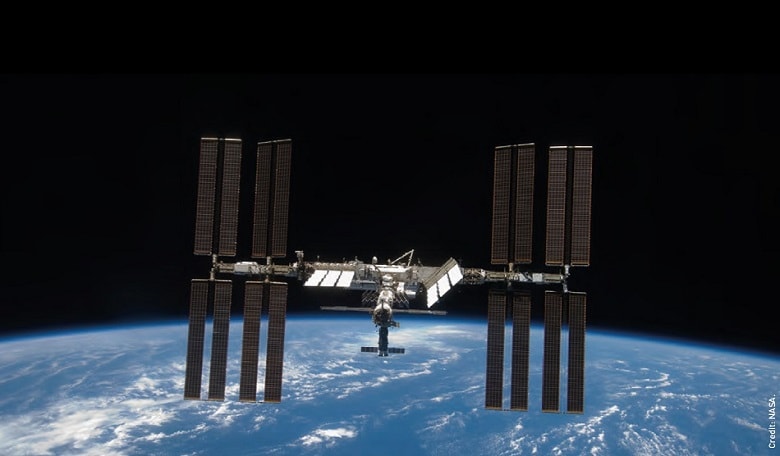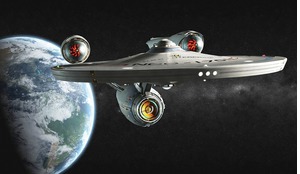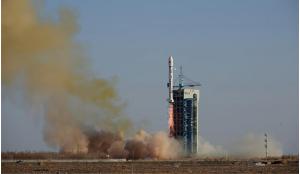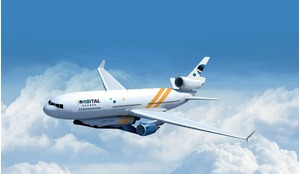In the late 1950s the space programmes of the United States and Soviet Union were built upon technology developed for military applications. Soon, though, those programs began to push the boundaries of technical achievement, demanding new solutions to problems conceived by imaginative thinkers and engineers. Before long, the lunar programs of both nations were generating or taking advantage of advances in robotics, propulsion, environmental control, and guidance, navigation and control (GN&C) systems.2,3
The best-known example of this was the role played by NASA’s Apollo programme in spurring development of integrated circuits (ICs). The Massachusetts Institute of Technology (MIT) was at work on the Apollo onboard guidance computer and took advantage of the concurrent development of ICs. First available in 1958 at roughly $1,000.00 per chip, MIT purchased over 5000 for its initial design, roughly 30% of the world’s supply. Paying a premium rate, NASA’s “investment” in the technology led and motivated IC dissemination.4 Manufacturers took note and began to increase production rates.
As more ICs were available and the cost dropped, engineers began exploring new applications for ICs. Designers on the Minuteman Missile Programme sought the means for placing onboard navigational computers into their systems. Demand soared, forcing IC technology into production. In 1964 Texas Instruments successfully tested the first navigational computer using ICs. By 1968, the cost of a single IC had dropped to $2.33.5 ICs began appearing in consumer products by the end of the decade. Further development of the technology led to devices with hundreds of transistors on each chip, and then thousands. The first microprocessors (utilising chips integrated into circuit boards) were manufactured in 1974, leading to the personal computing industry and opening the door to everything from digital media to the smartphones we use today.6
These developments and the economic activity enabled by them also gave rise to Silicon Valley.7 The Valley is a hub for high-technology innovation and development and is the home for many of the world’s largest high-tech companies. It also accounts for one-third of all venture capital investment in the United States, equaling roughly $7B in 2014.8
The story of the IC is frequently cited as an example of the ‘value proposition’ of space exploration, wherein the needs of that enterprise (in that case, for an onboard guidance computer) drove technological innovation. While that is true, it also misses a larger point: We remember the role played by the space programme in IC development because of a set of circumstances that occurred together: (a) the invention of the IC (which was leveraged by the Apollo program, not created by it); (b) the concurrent demand for chips, creating a production incentive (driven by the Minuteman Program, serving a pressing national need (in this case defence); (c) the resulting reduction in cost of ICs, opening the door to widespread application and (d) the subsequent entrance of large-scale private investment that propelled the technology up and out and helped to create the high-tech sector.
Over time, NASA (and later, other space agencies) focused on the ‘back end’ of the story, highlighting technology created by the space programme as a selling point for continued funding and development. Called ‘spinoffs’ in the United States, these have been accorded their own NASA publication and are frequently used for marketing purposes.9 Many of them are remarkable breakthroughs achieved as a result of the demands for creativity and innovation needed in order to explore and develop space. However, the overall economic activity associated with spinoff efforts is relatively small, likely because the technologies in question were developed for government needs and not in response to market demand.10
The nature of innovation
Innovation is an outgrowth of imagination aimed at problem-solving. Human beings are natural problem solvers, creating technology to help us since our earliest days as a species. We’re not alone; other mammals are tool-makers and problem-solvers too, employing rudimentary “technology” to hunt or forage for food, or to build habitats. Humans, however, sometimes tackle very big problems, far beyond our immediate reach.
The fundamental barriers or challenges to planning and execution of all large-scale enterprises – exploring space, mitigating climate change, feeding people, controlling disease outbreaks, or managing clean water demands – act as constraints on implementation, growth and future development. Innovations targeting these bottlenecks, particularly technological innovations that have impact across more than one enterprise, sector or market, are of very high value, attractive to investors and entrepreneurs alike.
…the overall economic activity associated with spinoff efforts is relatively small, likely because the technologies in question were developed for government needs and not in response to market demand.
In human spaceflight, this type of thinking was behind the founding of SpaceX, started by Elon Musk with an initial goal of reducing cost per pound of cargo to orbit to $1,000.11 This figure is traceable to a series of studies fostered by NASA and the US Department of Defense from the 1970s–90s.12 Those studies pointed to launch costs as the constraint holding back the utilization and exploration of space. A couple of studies closed in on the $1,000 figure as the inflection point.
Aiming at that target drove much of SpaceX’s functioning for its first several years and remains a corporate target (among others). A second major goal is to accelerate development, taking advantage of rapid prototyping to compete in the marketplace as soon as possible and to speed a much broader availability of space transportation than had been available in the past.13
The demand side of the equation is also important in driving markets that determine the best innovations. The role of the International Space Station (ISS) as a customer for commercial space transportation services is a case-inpoint. For providers offering crew and cargo systems and services there must be follow-on orbital platforms and new generations of paying customers to sustain them beyond the lifetime of the ISS. The race is on to determine whether a market associated with research and development, tourism, Earth observation or other benefits of Low Earth Orbit will emerge, enabled by the ISS.14 Transportation costs that are in line with expected revenues are critical to the success of this idea and to the emergence of viable markets in LEO.
National and global needs
The race is on to determine whether a market associated with research and development, tourism, Earth observation or other benefits of Low Earth Orbit will emerge, enabled by the ISS.
Do entrepreneurs actually increase the likelihood of innovation and cascading effects when targeting bottlenecks – and if so, what value might we build into space programmes if we align them with national or global needs? One way to view a bottleneck is to see it as a persistent constraint where breakthroughs have the potential to unleash economic growth. Space itself is both a frontier and a constraint. The unique physical characteristics of space are profoundly hostile to life as we understand it yet, as a frontier, it beckons.
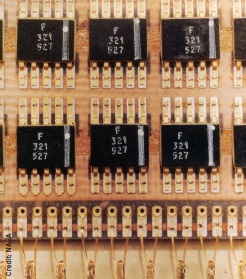 Integrated circuits in an Apollo guidance computer. The Massachusetts Institute of Technology (MIT) bought 30% of the world’s supply of integrated circuits (IC)to develop and build these devices. It has a decisive effect in stimulating the development of the IC market.
Integrated circuits in an Apollo guidance computer. The Massachusetts Institute of Technology (MIT) bought 30% of the world’s supply of integrated circuits (IC)to develop and build these devices. It has a decisive effect in stimulating the development of the IC market.
Recently investors and entrepreneurs have been targeting barriers to growth or human well-being as a basis for startups. Peter Diamandis, co-author of Abundance15, recently tweeted “Want to become a billionaire? Then help a billion people.”16 With some effort, this alignment of social and entrepreneurial interests could extend to space exploration. In 2009, the U.S. National Academies of Sciences issued a report calling for future alignment of space programme capabilities and plans with “high priority national imperatives, including those where space is not traditionally considered”. These include climate monitoring and change, international relations, and development of advanced technologies.17
These and other ‘Big Problem’ areas on Earth include some interesting intersections with the needs of human space exploration and development. Two of these, the availability and processing of water for propellant, but also for life support, and energy needs (obtaining, storing, managing, and transmitting energy or power) have direct relevance to many problems facing today’s world.
Clean water is required to support human life, no matter where on Earth or in space we happen to be. Similarly, energy is required to maintain infrastructure, manage logistics, and meet survival needs on Earth and in space. Clean energy and water are increasingly a focus for our planet, where their availability (or lack thereof) act as economic constraints, limiting the growth of municipalities, industries, and forcing subsistence-level existence in some places on the globe.18 The nexus of energy and water needs in space and on Earth represent potentially powerful areas of alignment for technology breakthroughs.
Not surprisingly, these two areas are the focus of several entrepreneurial efforts, including a business accelerator called SURGE, located in Houston, Texas. SURGE is the 10th largest accelerator in the country and provides mentoring, access to investors and teaming with other entrepreneurs focused on clean water and energy needs.19 Other entrepreneurial accelerators such as YCombinator, located in Silicon Valley, have issued calls for Big Problem startup companies who are developing breakthrough technologies. In effect it is an invitation for innovation on the ground; however many areas of focus have relevance to space, including energy, biotech, healthcare, and science.20
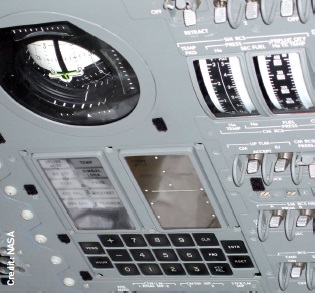 The Apollo Guidance computer in place.
The Apollo Guidance computer in place.
Recently both NASA and ESA have issued calls or entered into partnerships with technology companies who are developing capabilities that may be of use to space exploration programs.21,22 Not long after ESA’s announcement in March of this year, the Chinese signalled their intention to explore a similar approach.23 While it is too soon to evaluate these efforts, they represent a promising shift in the orientation of the agencies from directing technology, which may have limited spinoff potential, to harvesting it. Closer alignment of the needs of space agencies with the interests of investors, accelerators, and eventually markets driven by technological breakthroughs in areas of mutual interest can only benefit space exploration as we collectively look outward again after many years in Low Earth Orbit.
Harvesting innovation in systematic ways will change the space agencies themselves, enriching them and helping to develop a broader array of technical capabilities.
Efforts such as those currently under development by NASA and ESA attempt to bring innovation and technology breakthroughs such as occurred with ICs in the 1950s and 1960s into a programmatic framework. In those early days of space exploration, Silicon Valley and the entrepreneurial movement it helped bring about did not exist in the US. In the 21st century, a confluence of investor resources, entrepreneurial focus, inexpensive computing power, and market interest in development of breakthrough capabilities and technologies is coming into focus. Many of these technologies have significant potential impact to space exploration, assuming that synergies can be found and cultivated. Harvesting innovation in systematic ways will change the space agencies themselves, enriching them and helping to develop a broader array of technical capabilities supporting human expansion beyond Low Earth Orbit into deep space.
 ‘Silicon Valley’, the centre of technological innovation in California, sprung up in part because of work done in the Apollo Space Programme.
‘Silicon Valley’, the centre of technological innovation in California, sprung up in part because of work done in the Apollo Space Programme.
References
1: International Space Exploration Coordination Group (ISECG) (2013). Global Exploration Roadmap. Accessed May 3, 2015 at https://www.nasa. gov/sites/default/files/files/GER-2013_Small.pdf
2: Harvey, B. (2007). Soviet and Russian Lunar Exploration (pp. 69-108). Praxis Publishing Ltd., Chichester, UK.
3: Faulkner, A. H, Gurzi, F., and Hughes, E. L. (1962). MAGIC – An Advanced Computer for Spaceborne Guidance Systems”, IRE, Spaceborne Computer Engineering Conference.)
4: Mindell, D. A. (2008). Digital Apollo: Human and Machine in Spaceflight. Boston, MA: MIT Press.
5: IEEE (2011). Integrated Circuits and the Space Programme and Missile Defense. IEEE Engineering and Technology History Wiki. Accessed May 2, 2015 at http://ethw.org/Integrated_Circuits_and_the_Space_Program_ and_Missile_Defense
6: Zygmont, J. (2003). Microchip: An Idea, Its Genesis, and the Revolution It Created. Cambridge, MA: Perseus.
7: Sturgeon, T. J. (2000). How Silicon Valley Came to Be. In Kenney, M. (ed). Understanding Silicon Valley: The Anatomy of an Entrepreneurial Region (pp. 48-68). Stanford University Press.
8: Lee, W. (2014). Silicon Valley, San Francisco Top Venture Capital List with $7 Billion. SFGate (San Francisco Chronicle Online Publication). Accessed May 4, 2015 at http://www.sfgate.com/bayarea/article/Silicon-Valley-SF- dominate-venture-capital-5631809.php
9: National Aeronautics and Space Administration (2015). Spinoff 2015. Accessed on May 6, 2015 at https://www.nasa.gov/press/2015/january/ nasa-spinoff-2015-features-space-technology-making-life-better-onearth
10: Hertzfeld, H. (2002). Measuring the economic returns from successful NASA life sciences technology transfers. Journal of Technology Transfer, 27(4), 311-320.
11: Harwood, W. (2011). Musk Unveils Plans for Low-Cost Heavy Lift Rocket. CBS News: Space. Accessed May 5, 2015 at http://www.cbsnews.com/ network/news/space/home/spacenews/files/747f1836ccfc5934bfaf2288 f2afda2f-208.html
12: U.S. Congress, Office of Technology Assessment. (1990). Access to Space: The Future of U.S. Space Transportation Systems, OTA-ISC-415 (pp. 31-37). Washington, D.C.: U.S. Government Printing Office.
13: Chaikin, A. (2012). Is SpaceX Changing the Rocket Equation? Air and Space Magazine (January). Washington, D.C.: The Smithsonian Institution. Accessed May 3 at http://www.airspacemag.com/space/is-spacexchanging- the-rocket-equation-132285884/?no-ist
14: From a U.S. perspective, development of a commercial market in Low Earth Orbit utilizing the ISS is part of the mission of the Center for the Advancement of Science in Space (CASIS), the managing entity for the U.S. National Laboratory onboard the ISS. More about CASIS may be found at http://www.iss-casis.org
15: Diamandis, P. H., and Kotler, S. (2012). Abundance: The Future Is Better Than You Think. New York: Simon & Schuster.
16: https://twitter.com/PeterDiamandis/status/503975332652007424
17: National Research Council (2009). America’s Future in Space: Aligning the Civil Space Programme With National Needs (p. 59). The National Academies Press, Washington, D.C.
18: Dittmar, M. L. (2014). Getting the Rules Right: Low Earth Orbit as a Economic Development Region. The Space Review (September). Accessed May 1, 2015 at http://www.thespacereview.com/article/2600/1
19: More on SURGE accelerator may be found at: http://www. surgeventures.com
20: Shu, C. (2014). YCombinator Wants You to Solve Big Problems. Accessed on May 3, 2015 at http: //techcrunch.com/2014/09/12/ycombinator- wants-you-to-solve-big-problems
21: NASA, (2014). Lunar Cargo Transportation and Landing by Soft Touchdown (Lunar CATALYST) initiative. Accessed May 2, 2015 at http:// www.nasa.gov/lunarcatalyst
22: ESA (2015). Call for Ideas: Space Exploration As A Driver for Growth and Competitiveness: Opportunities for the Private Sector, (accessed on May 6, 2015 at http://esamultimedia.esa.int/docs/hso/ESA_CFI_Space_ Exploration_as_a_Driver_for_Growth_and_Competitiveness.pdf)
23: Lei, Zhao (2015). Private Companies Asked to Join Moon Program. China Daily (March 17). Accessed on May 5, 2015 at http://www.chinadaily.com. cn/china/2015-03/17/content_19828198.htm





